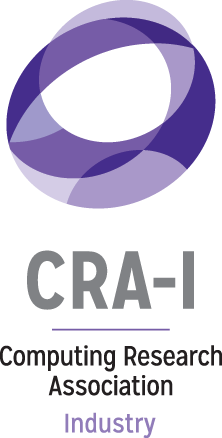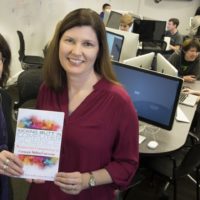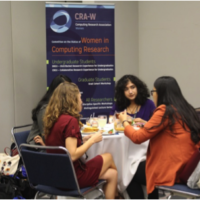Highlight on Alum Lana Yarosh
Interviewed by Amanda Stent, Bloomberg LP
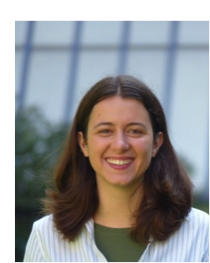
Svetlana “Lana” Yarosh is an Assistant Professor in the Computer Science & Engineering Department at University of Minnesota. Her research in HCI focuses on embodied interaction in social computing systems. Lana has won NSF CRII and the NSF CAREER grants, and best paper awards at CHI 2013 and CSWC 2014. She is a recipient of the McKnight Land Grant Professorship. Lana has two Bachelor’s of Science degrees from the University of Maryland (in Computer Science and Psychology), a Ph.D. in Human-Centered Computing from Georgia Institute of Technology, and two years of industry research experience with AT&T Labs Research. She attended CRA-W’s Career Mentoring Workshop for early-career researchers.
Q: What has been your career path? My start in Computer Science was due to a scheduling error in high school (I was signed up for European History but it conflicted with another course, so they put me in Pascal Programming instead). I found that I really loved the CS approach as a way of thinking and solving problems. I was also drawn to the fact that Computer Science could be combined with almost any other field. So I decided to major in it at the University of Maryland and I explored a few potential double majors as well, eventually settling on Psychology. In my Junior year, I discovered the area of Human-Computer Interaction, After participating in undergraduate research, I was hooked! I applied to a Human-Centered Computing Ph.D. program at Georgia Tech. At first, I thought I wanted to go into industry because I had great industry internship experiences during graduate school. I accepted a position at AT&T Labs Research. It was great to be able to work with such a talented team of colleagues and I learned a lot from the collaborations with experts there. But I also found that I really missed the energy and optimism that students brought to the table. Summer was my favorite time of the year because I would get to work with and advise interns! I did a bit of soul-searching and decided that maybe I should consider going back to academia. After a few months on the job market, I finally landed at the University of Minnesota. So far, it’s the perfect fit for me — I have great students, great mentors, and great peers!
Q: In your current position, what are your goals and the opportunities to make an impact? One of my favorite things about academia is that there are so many different ways to have impact. Of course, there are the usual — publishing, organizing conferences, and teaching. There are also lots of opportunities to transition work into industry (for example, HP is currently licensing some work from my group), to file patents, and to spin up startups. I definitely want to keep pushing in both scholarly and entrepreneurial directions, but my most important goal right now is to have an impact through mentorship and advising. I want to be known as an advisor who does right by her students and for graduating the next crop of Computer Science superstars! I spend my time accordingly — I make sure to make time to connect with my students daily, I have a big group, and I am always recruiting graduate and undergraduate researchers to my lab!
Q: Tell us about someone who inspires you and the knowledge they have imparted. My greatest inspiration is my Ph.D. advisor, Gregory Abowd. As any of his students will tell you, he really exemplifies caring mentorship, perspective, and integrity. He taught me to put my students first and how to provide students with opportunities to shine. He also taught me how to pick research problems — focusing on issues of personal relevance, research novelty, and broader impact. As I get older in my research program, I find myself reflecting more and more on lessons that he imparted.
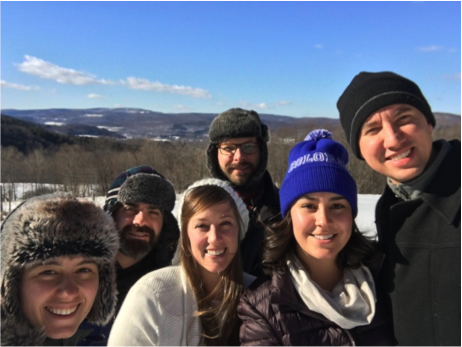
Lana and Friends celebrating New Years
Q: How do you balance work and the rest of your life? What do you enjoy doing when you aren’t working? My favorite thing to do is travel! The academic career is really well-suited for that. Beyond the yearly trips to major conferences in my field, I also get significant periods of time each year without teaching commitments (e.g., summer and winter breaks). This can support longer trips that serve both as opportunities to explore and ways to collaborate on research at other universities. For example, last summer my husband and I spent a month living in Chicago. The year before that, we were able to spend a whole month living and working in Tel Aviv. There are very few jobs where something like this is possible!
I also always make sure to stay strongly connected with my friends, family, and support network. Since most of them are not in Minneapolis, this means making opportunities to travel to connect. My husband and I have a strong core group of friends from grad school. We live all over the country, but we always make sure to spend a week together to celebrate New Years. We’ve been doing this for over five years now, each time picking a different location to meet up. This year we spent New Years in a cabin in upstate New York, enjoying the fireplace, playing a ton of board games, and taking turns cooking for each other.
Q: There’s a lot of talk these days about “AI”, data science and machine learning. What challenges should a person wanting to work in both HCI and data science/ML be looking at? Machine learning and data mining are really powerful tools! I myself have been reaching into these domains (particularly recently, as I have begun a productive collaboration with Prof. Arindam Banerjee in my department). I think that the key thing to keep in mind is that these approaches are tools, not ends in themselves. These approaches have the potential to improve so many facets of our lives, but it also may introduce a substantial threat to fundamental human rights like privacy, justice, belonging, independence, and more. A fundamental thread in my research and teaching is in understanding and evaluating technological advances in terms of both the benefits they may provide and the costs they may incur for the people who use them. I think that people seeking to work at the intersection of the two domains should be trained in ML methods but also in a human-centered mindset. They should be ready to work closely with people and communities affected by their research and be willing to change approaches and methods to advocate for the best interests of those groups.
Q: You have quite a strong online presence. How do you maintain this? How does it serve your career growth? I think that online presence is one of the most important tools in one’s research arsenal. This is how people discover what you do, how you get connected with opportunities, and frequently is the first experience potential students have with you. My online footprint centers mostly on my blog (http://lanayarosh.com/blog/). I post monthly on topics including the role of HCI in Computer Science, social justice issues in technology, and reflections on teaching and research. At first, I thought of this blog more as a personal place for reflection and cataloguing thought, but over time it has began to attract an audience. My two most viewed posts received over 9000 and over 5000 views respectively, which is definitely more eyes than any of my published papers. I now see it as a great opportunity to disseminate work and expand impact. For students in my group, it is a mandatory part of the process — when they publish a paper, they have to contribute a blog post to our research group’s page. We’ve had a few of these receive quite a bit of attention.
Q: You participate in Maker Faires and incorporate embodied / situated activities in your research and teaching. How do you think that dealing with the opportunities and constraints of the physical world strengthens your work? I think that embodied interaction defines the next age of computing. As we moved from mainframes to personal computers (PCs) to mobile computing, technology became more and more embedded in our lives, homes, and even on our bodies. As we think about computing, we need to shift our focus from designing sites, programs, or apps that people “visit” and instead consider how technology can best be embedded, embodied, and living in the world along with us. Physical computing, embodied interaction, tangible technologies, etc. allow us to leverage the intuition, skills, and capacity that we currently have for interacting with our world and apply it to our interactions with digital agents. Of course, there are also a number of challenges these approaches introduce. We need to be mindful to keep the interests of people and communities who use these technologies primary on the design agenda.
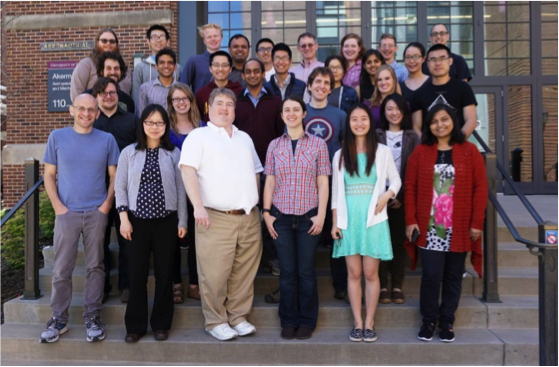
Lana is part of the GroupLens research center at University of Minnesota, pictured here
Q: You recently attended a CMW for early-career researchers. How did you find out about this opportunity? What did you find most valuable about the workshop? What ongoing relationships or activities have come out of this experience? I have a very supportive department! The department head and 3 or 4 other folks forwarded information to me about the CMW for early-career researchers on the same day! So, I knew that I should really check it out. It was a great experience. My favorite part of it was being able to connect with faculty at multiple points in their career. I like being able to think a couple of steps ahead. So, I loved being able to see not just what is important for me to get tenure but also start thinking about longer-term advancement and impact.
After the workshop, I was able to connect with a few folks more junior than me (swapping grants, etc.) and a few folks more senior than me as well. One of the most valuable things to come out of it was a conversation that I had with an industry colleague from Microsoft Research. We starting chatting about an area of research that we’ve both been meaning to explore. It turned out that there was a really interesting project in there and we’re now in the process of structuring a collaboration on a first investigation that we’ll be running this summer!
Q: What advice do you have for Ph.D, students? For new faculty members? Figure out which work activities charge you up and make sure to make time for these. Whether what drives you is programming, experiments, giving talks, teaching, planning research, analyzing data, etc. there are probably ways to structure any project to maximize your involvement in these activities. Then, take time to reflect and express gratitude when you do find opportunities to do what you love. It’s still amazing to me how I can get caught up in some painful minutia of the job and it takes a conversation with an outsider to step back and see the larger picture. I’ve been practicing finding moments to reflect on how much enjoyment I actually get from doing what I do!




